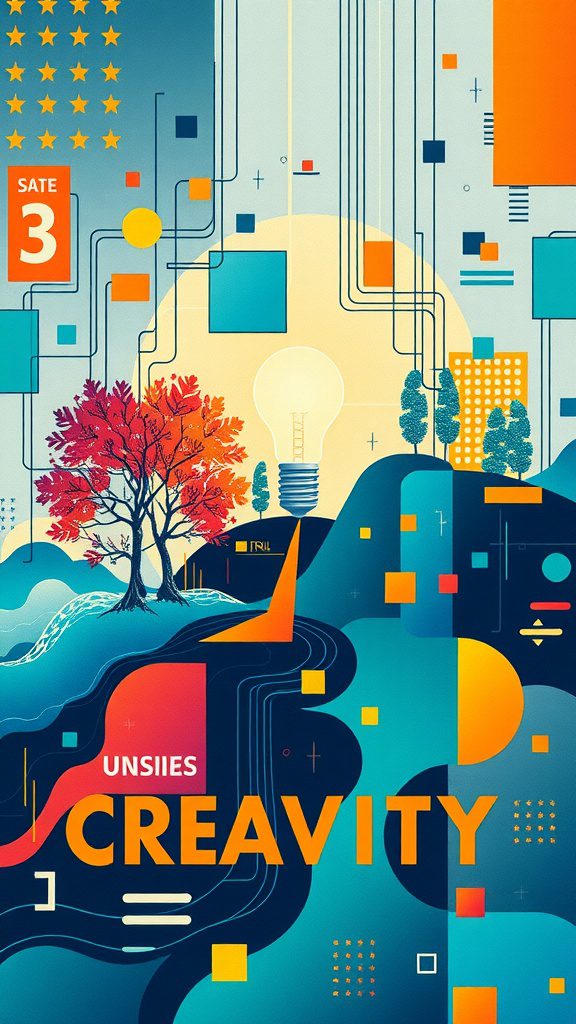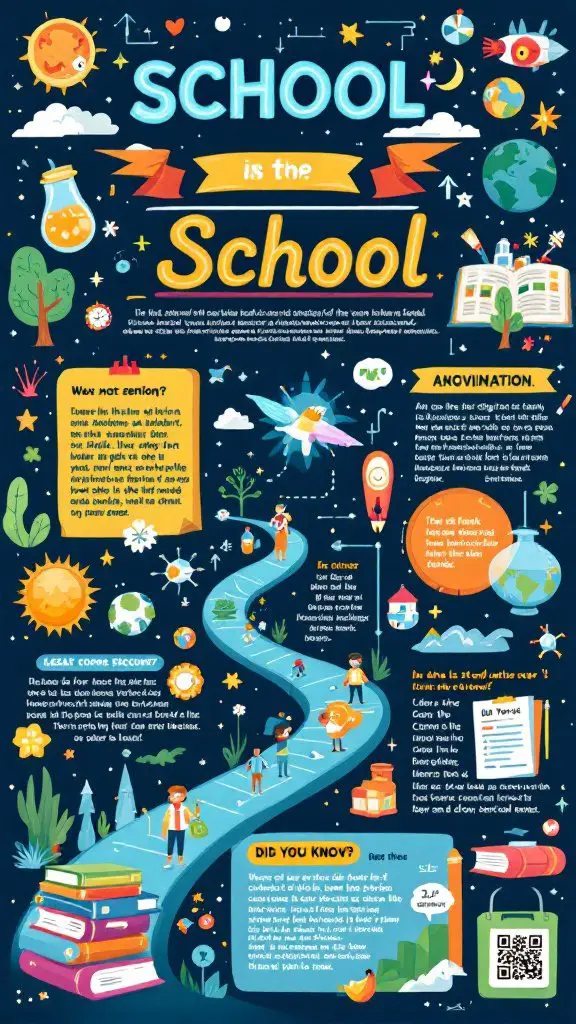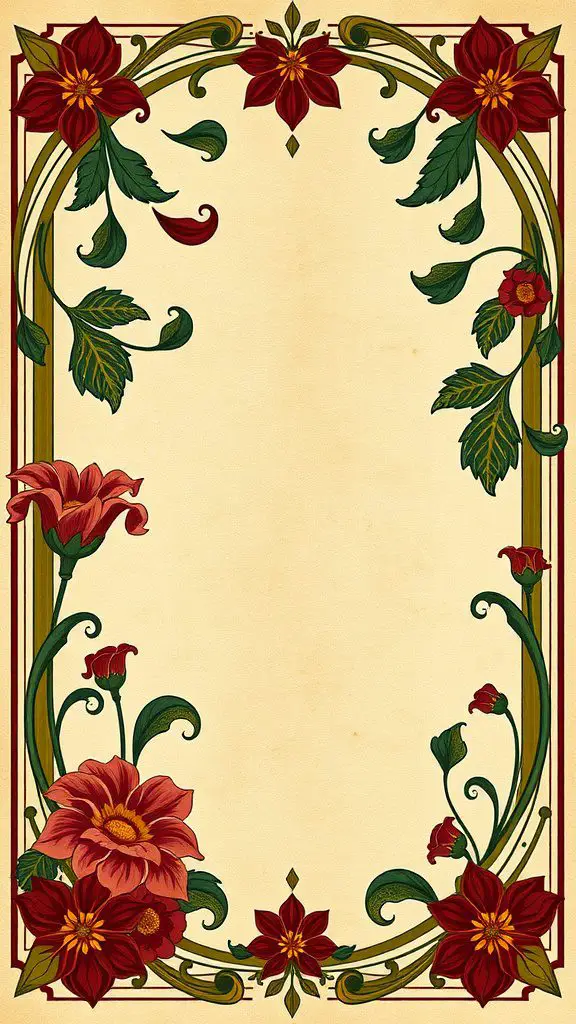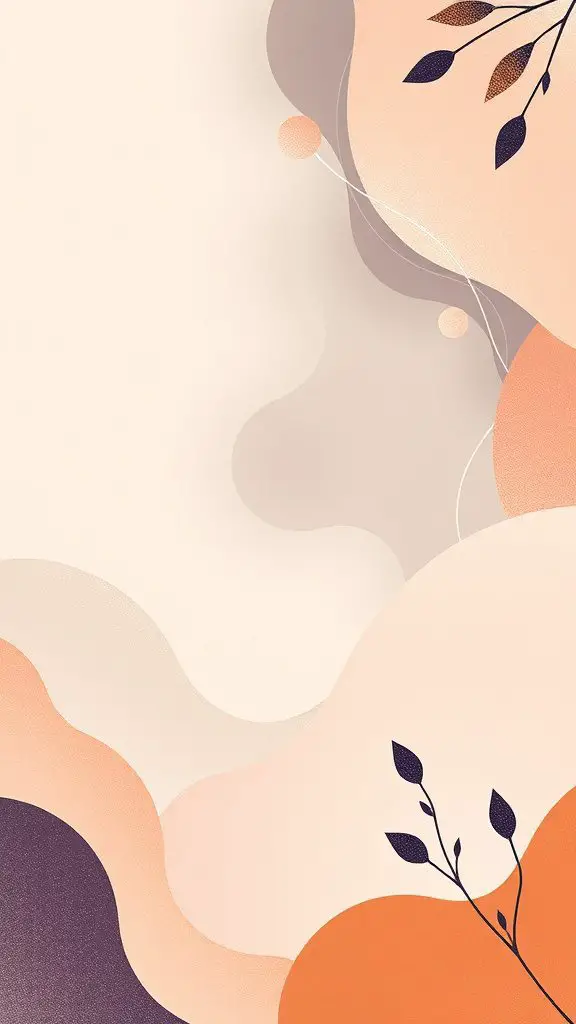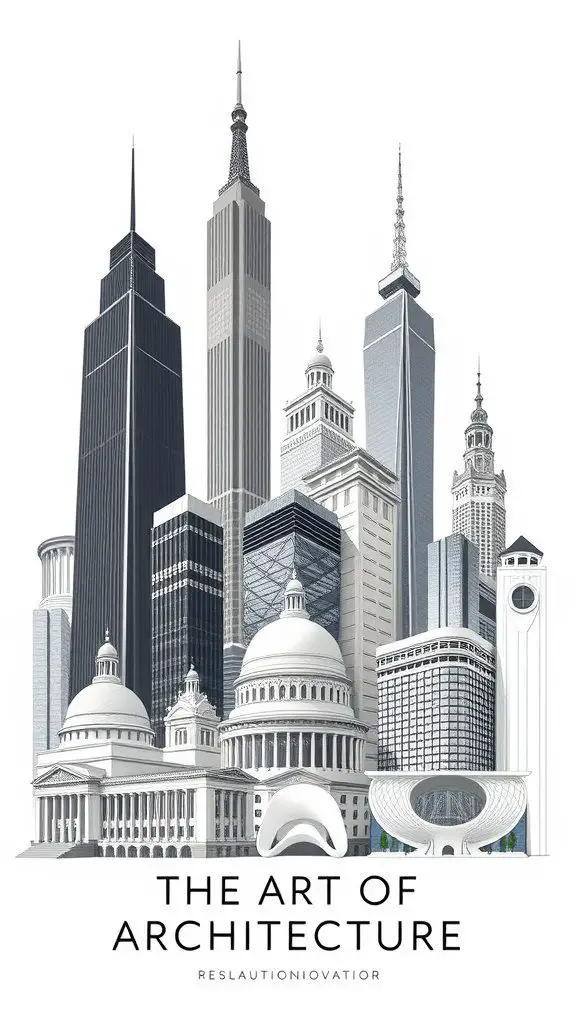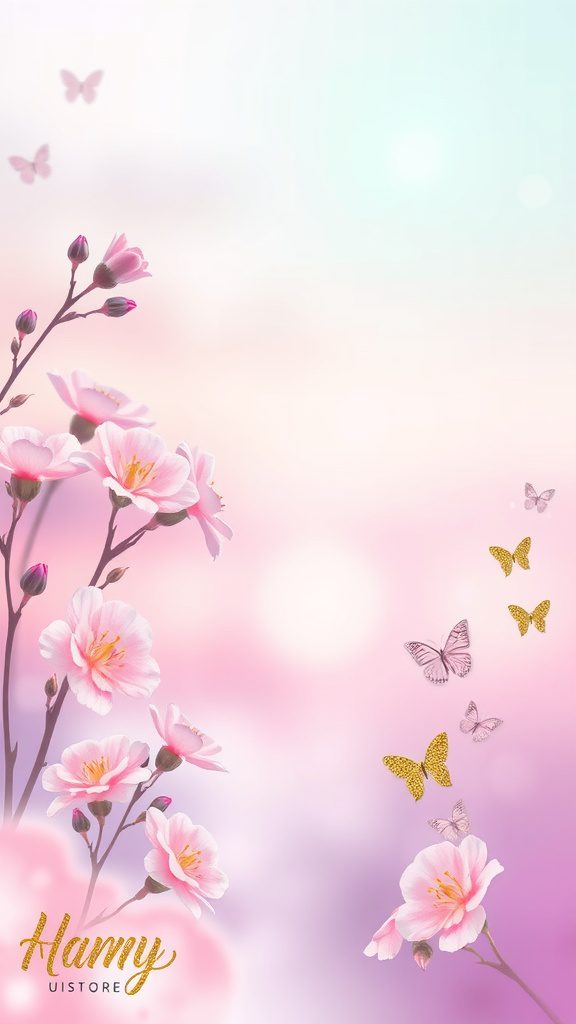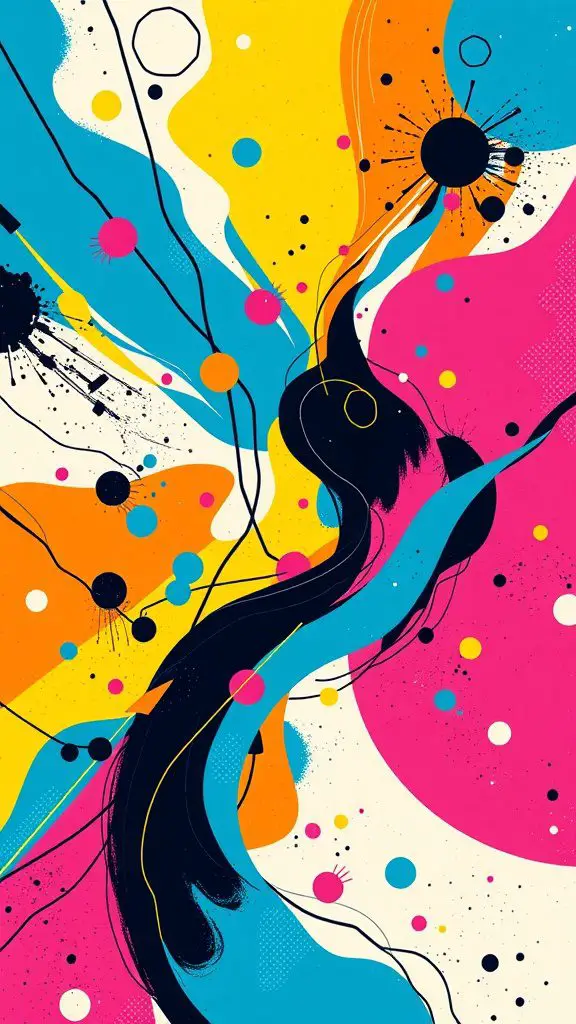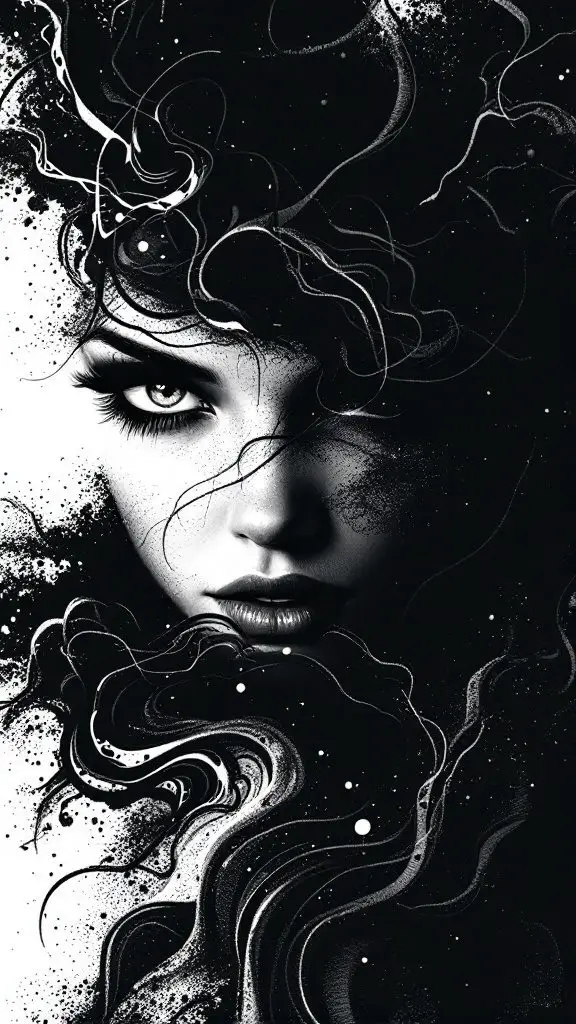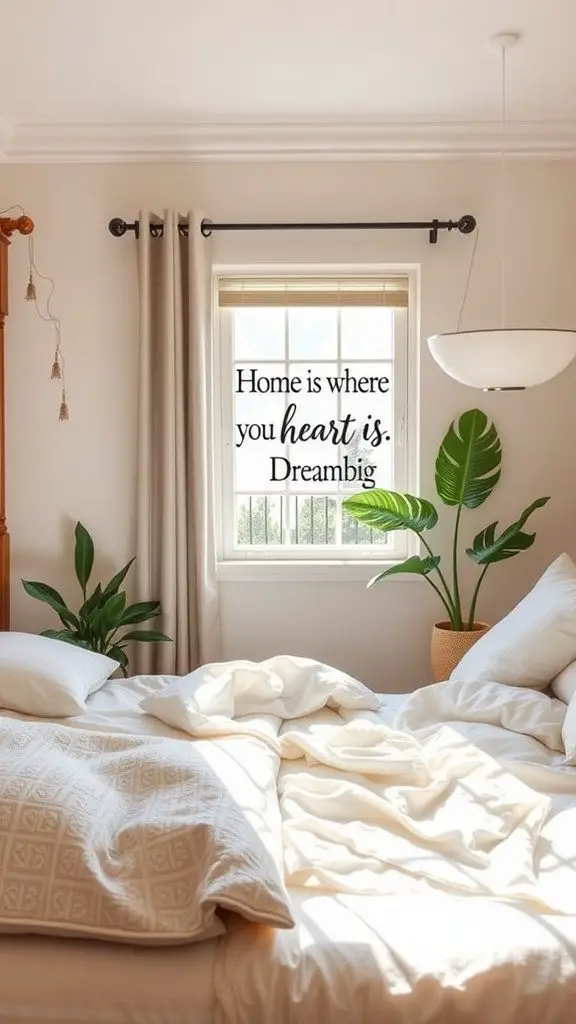Most people underestimate the impact a well-designed poster can have on conveying your message effectively. Whether you’re promoting an event, showcasing artwork, or sharing important information, your poster’s design plays a significant role in grabbing attention and engaging your audience. In this blog post, you’ll discover ten creative poster design ideas that will inspire you to elevate your visual communication. From color choices to typography, these concepts will help you craft eye-catching posters that resonate with your viewers and leave a lasting impression.
Poster Design Inspiration
A wellspring of creativity awaits you when exploring poster design inspiration. Immerse yourself in diverse styles, themes, and color palettes to revitalize your projects. Whether you lean towards the nostalgic or contemporary, understanding current trends can elevate your designs into statement pieces. Engage with a multitude of sources, and let your unique vision shine through.
Vintage Poster Art Revival
Vintage poster art is making a comeback, providing you with a rich source of inspiration for your designs. The charm of retro typography, bold colors, and nostalgic imagery can transport your audience to a different era, evoking emotions and memories. Incorporate vintage elements into your work to create a unique appeal that resonates with your audience.
Contemporary Graphic Design Trends
An exploration of contemporary graphic design trends can greatly enhance your poster designs. Embracing minimalism, vibrant gradients, and dynamic layouts allows you to create visually striking work. You should also consider incorporating elements like 3D design, abstract art, and typographic experimentation to ensure your posters engage and captivate your audience effectively.
A key trend in contemporary graphic design is the emphasis on experimentation. You can mix different styles, technologies, and materials to create new interpretations of classic themes. Stay updated with digital tools and techniques, as they can significantly expand your design possibilities. By combining innovation with your unique perspective, your posters will reflect the leading edge of design while resonating with your audience.
Poster Design Ideas School Project
While working on your school project, consider the impact of your poster design. A visually compelling poster can effectively communicate your message and engage your audience. Utilizing vibrant colors, clear typography, and relevant images will help capture attention and convey your ideas. Don’t hesitate to explore various layouts and styles that reflect your subject matter, making your poster not just informative, but also aesthetically appealing.
Educational Infographic Layouts
For creating educational infographics, focus on clarity and organization. Utilize charts, graphs, and icons that highlight key information, making complex concepts easily digestible for your audience. An effective infographic layout guides the viewer’s eye through the information flow, ensuring necessary points stand out and enhancing overall comprehension.
Subject-Specific Visual Themes
You can enhance your poster’s effectiveness by implementing subject-specific visual themes. Align your design elements with the topic, incorporating images and colors that resonate with the subject matter to create a thematic coherence throughout your poster.
For instance, if you are designing a poster on environmental science, use earthy tones and imagery of nature to emphasize your theme. Similarly,, for a mathematics project, consider using geometric shapes and patterns to visually represent mathematical concepts. By aligning your visuals with the subject, you not only create a stronger connection with your audience but also enhance their understanding of the topic presented.
Poster Design Background
One key aspect of effective poster design is the background, which sets the overall tone and enhances your message. Your choice of background not only affects the visual appeal but also influences how your content is perceived. Whether you’re opting for a solid color, an elaborate pattern, or an image, understanding the impact of your background on the viewer’s experience is important in creating an engaging and memorable design.
Textured Paper Effects
For a unique and tactile experience, incorporating textured paper effects into your poster design can add depth and character. Using materials such as linen, canvas, or even recycled paper can evoke a sense of authenticity and connection. This approach not only elevates the visual appeal of your design but also engages the viewer on a sensory level, making your poster stand out in any setting.
Gradient Color Schemes
Assuming you aim to create a captivating visual experience, gradient color schemes can effectively elevate your poster’s aesthetic. By blending two or more colors gradually, you can create a sense of movement and depth that draws the viewer’s eye. This technique works well to convey emotions or themes, making your design more dynamic and visually appealing.
Gradient color schemes allow you to play with color combinations and create a harmonious flow throughout your poster. You can experiment with different color transitions, from subtle blends to bold contrasts, to enhance your design’s overall impact. By skillfully using gradients, you not only capture attention but also guide the viewer through your message, ensuring an engaging experience that resonates with your audience.
Poster Design Architecture
Your poster design can expertly utilize architectural principles to create a visually striking composition. By incorporating elements from architecture, such as balance, symmetry, and alignment, you can elevate your posters from simple visuals to harmonious works of art. Emphasizing these design fundamentals helps guide the viewer’s eye and enhances the overall impact of your message.
Structural Elements As Frames
Any great design should consider the structural elements of architecture as framing devices. You can use straight lines and geometric shapes to guide the viewer’s focus and establish a strong hierarchy within your poster. These frames not only create a sense of organization but also add visual interest, making your design feel dynamic and engaging.
Blueprint Style Compositions
If you’re looking to convey sophistication and precision, consider a blueprint style for your poster design. This approach emphasizes clean lines, technical details, and a limited color palette, giving your work a professional look. By incorporating elements often found in architectural blueprints, you can create a unique aesthetic that draws viewers in and communicates your message with clarity.
This style often utilizes a background filled with grid patterns and a monochromatic color scheme to mimic the look of traditional blueprints. You can enhance this effect by integrating sketches, annotations, or measurements that provide insight into your subject matter. Such details can transform your poster into an informative piece while maintaining a modern feel that resonates with your audience.
Poster Design Aesthetic
Now, understanding the aesthetic of your poster design can elevate your work from ordinary to extraordinary. You can harness various styles, colors, and themes to create a striking visual impact that resonates with your audience. Whether you lean towards minimalism, retro vibes, or something more avant-garde, the aesthetic you choose plays a vital role in conveying your message effectively.
Vaporwave Color Palettes
On the topic of Vaporwave, consider using pastel pinks, soft purples, and vibrant teals. These color combinations evoke a sense of nostalgia while providing a modern twist. Pairing these retro colors with glitch art and 3D elements can transport viewers to an imaginative world where technology meets vintage aesthetics.
Brutalist Design Elements
An effective approach to poster design is incorporating Brutalist elements, which emphasize raw, unrefined aesthetics. This style often features bold, blocky texts, contrasting colors, and a sense of imperfection. By adopting this design, you can create a striking piece that challenges traditional visuals and adds a unique flavor to your work.
Vaporwave aesthetics draw inspiration from the 80s and 90s digital culture, creating a dreamlike environment that captivates viewers. Utilizing bold geometric shapes, retro-futuristic fonts, and layered textures can enhance your design. By blending these elements, you offer a layered viewing experience that invites your audience to explore deeper meanings within your poster, all while maintaining a cohesive, eye-catching color scheme.
Poster Design Abstract
Your posters can serve as powerful visual statements that capture attention and convey messages effectively. Designing a poster involves a harmonious blend of elements including typography, imagery, and layout, which work together to create a compelling visual narrative. By understanding and applying various design principles, you can elevate your posters from mere decorations to impactful communicative tools that resonate with your audience.
Geometric Shape Compositions
The use of geometric shapes in your poster designs introduces a sense of order and structure. You can create striking compositions by incorporating circles, triangles, and squares, which guide the viewer’s eye and create an intuitive flow. By juxtaposing different shapes and colors, you can evoke emotions and highlight your message effectively, ensuring that it stands out in any setting.
Fluid Organic Patterns
Compositions that incorporate fluid organic patterns add a dynamic and natural quality to your posters. These patterns often mimic elements found in nature, bringing a sense of movement and softness to your design. By integrating organic forms and soft lines, you can create a welcoming and inviting atmosphere, making your posters not just eye-catching, but also appealing to the senses.
Poster designs featuring fluid organic patterns can evoke feelings of calm and harmony. You might explore using swirling shapes, gentle curves, or flowing lines that mimic natural elements like water or foliage. This approach not only captures attention but can also establish a deeper emotional connection with your audience. Selecting a color palette that complements these organic forms enhances the overall aesthetic, promoting tranquility and engagement in your design.
Poster Design Black and White
Unlike color posters, black and white designs offer a timeless aesthetic that highlights the essence of your message. The absence of color can create a striking visual effect, allowing shapes, textures, and layout to become the focal points. This minimalist approach often enhances the emotional impact of your design, making it an ideal choice for themes involving nostalgia, elegance, or seriousness.
High Contrast Typography
Any effective black and white poster leverages high contrast typography to capture attention. Bold fonts against a stark background not only enhance readability but also communicate your message with authority. Choose typefaces that align with your brand’s personality, and play with font sizes to create a dynamic hierarchy, ensuring that the most important information stands out prominently.
Silhouette-Based Imagery
You’ll find that silhouette-based imagery adds depth and intrigue to your black and white posters. This technique focuses on the outline of subjects, stripping away extraneous details to emphasize form and movement. Silhouettes can evoke powerful emotions and stimulate curiosity, making them a fantastic choice for storytelling. Incorporate contrasting backgrounds to enhance the visibility of your silhouettes, ensuring they resonate visually while conveying your intended message effectively.
Silhouette-based imagery creates a captivating focal point for your poster design. By using strong outlines against a contrasting background, you can draw viewers in while maintaining an air of mystery. This visual strategy is especially effective for conveying themes of transformation, freedom, or connection, as silhouettes allow the audience to interpret the image in their own way. Use iconic shapes or recognizable figures to enhance relatability, solidifying your message through elegant simplicity.
Poster Design Business
All businesses can maximize their outreach with well-designed posters that communicate their message effectively. Posters serve as a powerful medium for promotion, whether you are advertising an event, showcasing a product, or sharing important information. By harnessing creative design concepts, you can attract potential customers, drive engagement, and build brand awareness in a visually appealing manner.
Corporate Identity Integration
On integrating your corporate identity into poster designs, you create a cohesive look that aligns with your brand values. Consistency in fonts, colors, and logos helps reinforce brand recognition, making it easier for your audience to connect with your business. When potential customers see your posters, they should immediately understand who you are and what you stand for.
Professional Color Schemes
Some of the most effective poster designs use professional color schemes that resonate with your target audience. Choosing the right colors not only enhances the aesthetic appeal but also conveys specific emotions and messages related to your brand. Understanding color psychology can significantly improve your poster’s impact on viewers.
Plus, when you select a professional color scheme, it is important to consider your brand’s identity and the message you wish to deliver. Colors evoke emotions and can influence perception; for instance, blue conveys trust, while red signifies urgency. Make sure to avoid using too many colors, as this can distract from your poster’s primary message. By applying a balanced palette, you can create a visually appealing design that captures attention while maintaining clarity and focus.
Poster Design Bedroom
After transforming your bedroom into a haven of relaxation, consider the impact of poster design. Thoughtfully chosen posters can enhance the ambiance, ensuring your space mirrors your personal style while fostering tranquility. From artwork that sparks creativity to calming imagery, your wall decor can play a significant role in making your bedroom a peaceful retreat. Choose designs that resonate with your personality and taste, creating a space where you feel most at ease.
Calming Visual Elements
Any element that brings peace to your bedroom can serve as an effective visual anchor in your design. Natural landscapes, soft color palettes, or abstract shapes can create a serene atmosphere. When selecting posters, aim for imagery that evokes a sense of calm and relaxation, ensuring your space offers a comforting escape from the hustle and bustle of everyday life.
Personalized Decorative Themes
Calming visual elements extend to how you can express your unique style through your bedroom’s decor. Incorporating personalized themes not only reflects who you are but also complements the tranquility you’re aiming for in your space. Whether it’s vintage travel posters, minimalist art, or family photographs, your choice of themed posters can tell a story while crafting an inviting environment.
Personalized decorative themes allow you to curate an atmosphere that resonates with your interests and experiences. By selecting posters that reflect your hobbies, passions, or even your travels, you can create a space that feels distinctly yours. This approach not only adds character to your room but also serves as a source of inspiration and motivation daily. Make your bedroom a canvas of your life journey, where every poster has a personal touch and significance.
Poster Design Birthday
Despite the ease of digital invites, a well-designed birthday poster can add a personal touch to your celebrations. Whether you’re throwing a party for a child, an adult, or a milestone event, your poster can capture the spirit of the occasion. Use vibrant colors, playful fonts, and engaging layouts to convey the excitement and joy of this special day.
Celebratory Typography Treatments
Treatments such as bold, playful fonts or elegant scripts can instantly elevate your birthday poster. Choose typography that reflects the theme of your celebration; for a fun children’s party, consider bubbly fonts, while a sophisticated adult celebration can benefit from sleek, modern typefaces. Play with sizes, colors, and spacing to create a visually engaging focal point that draws attention.
Festive Illustration Styles
Assuming you want to enhance your poster’s visual appeal, consider incorporating festive illustrations. These can range from whimsical graphics to chic designs that resonate with your birthday theme.
Illustration styles can significantly influence the mood of your birthday poster. For a more playful vibe, opt for cartoonish characters or vibrant, exaggerated elements that reflect joy and fun. Alternatively, you might choose elegant line drawings or watercolor designs for a more sophisticated approach. Be sure to integrate these illustrations harmoniously with your typography and layout to create a cohesive design that resonates with your audience and enhances the celebratory atmosphere.
Poster Design Competition
To stand out in a poster design competition, it is imperative to blend creativity with clear messaging. Your design should not only capture attention but also convey the essence of the event or message you are promoting. Consider the rules and requirements of the competition, as these often provide a framework for your innovative ideas. Research past winners for inspiration, and don’t hesitate to push boundaries while adhering to basic design principles. Ultimately, your goal is to create a poster that resonates with both the judges and the intended audience.
Attention-Grabbing Visual Hooks
You should focus on incorporating bold visuals that instantly catch the eye. Consider using striking colors, unique imagery, or dynamic typography to create a visual hierarchy that guides viewers through your design. Effective use of negative space can also enhance visual appeal, making imperative elements pop. Think about what intrigues you in the posters you admire and apply similar techniques to ensure your poster stands out in a saturated visual environment.
Unique Conceptual Approaches
Unique ideas can set your poster apart from the competition. Your initial concept should challenge conventional design methods and offer a fresh perspective. This may involve creative themes or unexpected juxtapositions that provoke thought or conversation. By stepping outside the box, you can develop a cohesive concept that engages your audience while effectively communicating your message.
It is imperative to foster originality in your conceptual approaches. Consider exploring different storytelling angles related to your topic, or incorporating elements from various cultural backgrounds to add depth to your design. Infusing humor or irony can create memorable impressions, but ensure they align with your overarching theme and intent. Think critically about how your unique perspective can resonate with viewers, as this connection often leads to greater impact and engagement.
Poster Design Coffee
Once again, you can elevate your poster design with a coffee theme that exudes warmth and comfort. Incorporating elements related to coffee invokes a sense of familiarity and can attract coffee lovers while effectively communicating your message. Whether for a café, workshop, or an event, your coffee-themed design should engage viewers and stimulate their senses, making them crave that perfect cup of joe.
Rich Brown Color Palettes
To create an inviting atmosphere in your coffee poster design, opt for rich brown color palettes. Deep shades of chocolate and chestnut evoke the warmth and richness of coffee beans, allowing you to craft a visual experience that feels cozy and welcoming. You can accentuate these browns with soft cream or beige tones to reflect the delightful creamer that complements your favorite brew.
Artisanal Hand-Drawn Elements
Artisanal hand-drawn elements add a unique touch to your coffee-themed poster, enhancing its authenticity. By incorporating sketches of coffee cups, beans, or brewing methods, you create a handcrafted vibe that appeals to artisanal coffee enthusiasts. You can give your design a personal touch while setting it apart from mass-produced prints.
Coffee is an art form, and hand-drawn elements can beautifully capture that essence. When you integrate illustrations of steaming cups or detailed coffee plants, you not only showcase the craft involved in making great coffee but also invite viewers to experience the passion and creativity behind the brew. This technique emphasizes the artisanal aspect, making your poster an even more compelling visual narrative.
Poster Design Education
Despite the rise of digital media, mastering poster design remains vital for effective communication. Understanding the principles of design, visual hierarchy, and audience engagement can significantly enhance your projects. By leveraging resources like workshops, online courses, and design books, you can develop the skills needed to create impactful posters that resonate with your target audience.
Knowledge Visualization Techniques
Even the most complex information can become accessible through effective visualization techniques. Consider using graphs, infographics, and charts to convey data clearly. Enhancing your posters with these methods ensures your message is not only seen but also easily understood by viewers, making your content more engaging and informative.
Learning-Focused Layout Structures
For your poster to effectively communicate educational content, a structured layout is vital. By organizing information logically, you help guide your audience through the material effortlessly, fostering a deeper understanding.
Any successful learning-focused layout prioritizes clarity and flow. Divide your content into distinct sections with headings that capture attention and direct the viewer’s eye. Use bullet points for lists and visuals to complement text, breaking down complex information into digestible parts. This approach not only enhances readability but also encourages viewers to absorb and engage with the material more profoundly, creating a more impactful educational experience.
Poster Design Environment
To create an impactful poster, it’s imperative to consider the environment in which it will be displayed. The surrounding elements can either enhance or detract from your design, so think about the context—whether it’s a natural landscape, urban setting, or indoor space. Factors like lighting, surrounding colors, and textures play a pivotal role in how your poster is perceived. Integrating your design with the environment can lead to a more cohesive and visually appealing presentation.
Sustainable Materials Representation
If you’re looking to make an eco-friendly statement with your posters, consider using sustainable materials in your design. Opting for recycled paper, biodegradable inks, or even digital formats can significantly reduce your environmental footprint while still delivering a powerful message. Highlighting these materials in your design will not only elevate its appeal but also show your commitment to sustainability.
Nature-Inspired Color Schemes
An effective way to create a harmonious design is by utilizing nature-inspired color schemes. Drawing from the colors found in the natural world—earthy greens, deep blues, and warm browns—can evoke a sense of tranquility and connection to the environment. These palettes can help convey your message while resonating deeply with viewers.
You can take your poster design to the next level by incorporating color schemes inspired by nature. By analyzing seasonal changes or the color palette of local flora and landscapes, you can select hues that evoke specific feelings or themes. For example, soft pastels can suggest springtime renewal, while rich, vibrant colors might represent autumn’s abundance. This connection not only enhances visual appeal but also fosters a deeper emotional response in your audience.
Poster Design Football
Keep the excitement of the game alive with your football poster designs. Use bold graphics, dynamic typography, and striking imagery of players in action to capture the essence of the sport. Whether you’re promoting a match or celebrating a team, your poster should evoke the energy and passion associated with football, compelling viewers to take notice and engage.
Dynamic Action Compositions
Little details, such as layering images of players in motion, can significantly enhance your football posters. Aim for dynamic compositions that convey the intensity of the game. Utilize angles that highlight athleticism and drama, emphasizing key moments like goals or tackles. This approach not only draws the eye but also conveys the heart-pounding excitement of live football.
Team Color Integration
You’ll want to make your team colors stand out in vibrant ways. Incorporating your team’s official colors throughout the poster can create a cohesive and visually appealing design. Use these colors in backgrounds, text, and graphics to reinforce team identity and pride, ensuring your audience feels a strong connection to their team.
Plus, utilizing team colors in various shades can add depth and dimension to your design. Consider blending lighter and darker tones for background elements, creating a gradient effect, or using alternating colors for text to make important information pop. By harmonizing all elements with your team’s colors, you enhance the overall impact of your poster, making it not only attractive but also representative of your team’s spirit.
Poster Design Green
Once again, harnessing the power of green tones in your poster design creates a visual connection to nature and sustainability. By using shades of green, you can evoke feelings of tranquility and balance, making your message resonate more deeply with your audience. Utilize earthy textures and elements to enhance the overall aesthetic, ensuring that your designs not only catch the eye but also promote eco-conscious living.
Eco-Friendly Visual Messaging
For your poster design, consider incorporating eco-friendly materials and techniques that align with your green message. Using recycled paper or sustainable inks demonstrates your commitment to the environment, while also appealing to an audience that values environmental responsibility. Your messaging should reflect a sense of urgency and optimism, inspiring viewers to take action towards more sustainable choices.
Botanical Illustration Styles
Green is not just a color; it can also represent the beauty of plant life through botanical illustration styles. By integrating these artistic elements into your poster design, you can create captivating visuals that celebrate nature’s diversity. Whether you choose intricate line drawings, watercolor splashes, or abstract representations, botanical illustrations can breathe life into your message and immerse viewers in a lush, verdant experience.
Any thoughtful design project involving botanical illustrations can draw upon the rich history and variety of this art form. You can explore styles ranging from traditional realism to playful, modern interpretations, which can cater to different tastes and evoke distinct emotions. Consider varying your approach—combining detailed depictions of leaves, flowers, and plants with vibrant colors or muted palettes to create the perfect balance and draw attention to your central message. Emphasizing the delicate nuances of botanical life not only enhances the visual appeal but also reinforces your commitment to environmental themes in your design.
Poster Design Handmade
Not all stunning posters come from digital design; handmade posters provide a unique and personal touch. By incorporating various crafting techniques, you can create eye-catching artwork that reflects your individual style. Handmade posters allow you to explore your creativity and produce a one-of-a-kind piece that stands out from mass-produced alternatives.
Tactile Texture Techniques
Poster design can benefit immensely from tactile texture techniques, as they add a physical dimension to your work. By using materials such as fabric, paper, or natural elements, you can create depth and intrigue. Experimenting with layering and contrasting textures can engage viewers in a tactile experience that draws them closer to your design.
Craft-Inspired Decorative Elements
An effective way to elevate your poster design is by integrating craft-inspired decorative elements. These could include hand-painted patterns, woven components, or cut-out shapes that add visual interest. Such elements serve not only as embellishments but also enhance the narrative within your poster, allowing you to convey your message creatively.
Techniques such as collage, embroidery, or decoupage can offer additional layers of meaning and texture to your design. By merging diverse materials and craft methods, you create a distinctive aesthetic that resonates with your audience. Incorporating these craft-inspired elements can bring a charming, artisanal quality to your work, ensuring it captures attention and communicates your vision effectively.
Poster Design Inspiration Creativity
Not all design ideas come from conventional sources. To foster your creativity, investigate diverse art styles, nature, or even everyday life experiences. Embrace the unexpected and let your imagination guide you. Analyze what resonates with you and think about how you can translate that into a compelling visual narrative. Your unique perspective can spark fresh ideas that speak to your audience and elevate your designs.
Innovative Mixed Media Approaches
Any artist can enhance their poster designs by experimenting with mixed media techniques. Combine traditional skills like painting or drawing with digital elements, photography, or collage. This mash-up of different materials and styles can create depth and interest in your poster, making it stand out. The beauty of mixed media lies in its versatility, allowing you to push boundaries and develop your distinct artistic voice.
Unexpected Visual Juxtapositions
The incorporation of unexpected visual juxtapositions can invigorate your poster design. Pull together contrasting elements to evoke curiosity and engagement. By placing unrelated images or styles side by side, you encourage the viewer to explore new relationships and narratives within your work. This bold approach can transform a simple poster into an eye-catching conversation starter.
Visual juxtapositions can challenge viewer perceptions and prompt them to reconsider familiar themes or objects. When you pair unexpected visuals, you create tension that draws attention and stimulates thought. Experiment with varying scale, color, or texture to introduce surprising contrasts. Whether through a playful combination of typography and imagery or a clash of styles, you’re able to craft thought-provoking designs that resonate with your audience.
Poster Design Illustration
Unlike other design elements, illustrations bring a unique vibrancy and personality to your posters. They can evoke emotions, convey messages, and captivate your audience’s attention in a way that photography often cannot. Utilizing illustrations effectively can make your poster stand out and resonate with viewers, encouraging them to engage with your content and remember your message.
Character-Based Storytelling Elements
The use of characters in your poster design can create a narrative that draws viewers in. Effective character-based illustrations help tell a story, making your message more relatable and memorable. Whether you’re designing for a product, event, or cause, using identifiable characters can evoke empathy and connect with your audience on a deeper level.
Hand-Drawn Artistic Techniques
Clearly, hand-drawn artistic techniques can add a personal touch to your poster designs. These methods bring a sense of authenticity and craftsmanship that digital designs often lack, making your work feel more genuine and engaging.
You can incorporate hand-drawn elements by sketching your designs or using graphic software that mimics traditional art techniques. Experiment with various styles, like watercolor washes or ink illustrations, to enhance your poster’s aesthetic. This approach not only showcases your artistic ability but also creates a unique visual language that resonates with your audience. Hand-drawn designs can evoke nostalgia and warmth, boosting emotional connections and making your poster an effective communication tool.
Poster Design Minimalist
Many designers embrace minimalist poster design for its elegance and clarity. By stripping away unnecessary elements, you can create a visually striking piece that communicates your message effectively. Focusing on simplicity allows your design to evoke emotions and grab attention without overwhelming the viewer. A minimalist approach is ideal for making potent statements with fewer components, allowing you to enhance your design skills while also ensuring your poster stands out in a crowded space.
Negative Space Utilization
Negative space refers to the area around and between the main subjects of your design. Effectively utilizing this space allows you to create balance and draw attention to focal points. You should consider the empty spaces as part of your composition, as they help to highlight the elements you want your audience to notice. A thoughtful approach to negative space can transform a cluttered design into a sleek, inviting poster.
Essential Element Reduction
Reduction is about minimizing the components of your poster to those that are absolutely necessary. This deliberate distillation helps convey your message clearly without distractions. By focusing on the necessarys, you can emphasize the key ideas and ensure that your audience grasps the intended focus without getting lost in excess details.
For instance, when designing a poster for a music event, consider including only the band name, date, and venue. Eliminate any extraneous graphics or text, allowing the core information to take center stage. By doing so, your poster will not only look sophisticated but also communicate the necessary details in a direct manner, making it more effective in catching the eye of potential attendees.
Summing up
On the whole, exploring various poster design ideas can significantly enhance your creative projects. By considering elements such as color schemes, typography, and layout, you can create visually striking posters that effectively communicate your message. Whether you’re promoting an event, a product, or an idea, infusing your design with originality and coherence will engage your audience. Take the time to experiment with different styles and techniques, as this will ultimately refine your skills and ensure your designs stand out in today’s competitive visual landscape.
FAQ
Q: What are some popular themes for poster designs?
A: Popular themes for poster designs include travel, music events, movie promotions, social causes, and vintage styles. Depending on the target audience, you might choose themes that evoke emotions, such as nostalgia or excitement, and visually appealing elements that create an impactful message.
Q: How do I choose the right color scheme for my poster?
A: When opting for a color scheme, consider the emotions you want to convey along with the overall message of the poster. Utilize color theory to create harmony and contrast. Tools such as color wheel palettes or online generators can help you find complementary colors that enhance the visual appeal while ensuring legibility.
Q: What should I include in my poster layout for better organization?
A: A well-organized layout includes a clear hierarchy of information. Start with a catchy headline or title, followed by necessary details like date, time, location, and any promotional offers. Use visuals such as images or icons to break up the text and guide the viewer’s eye to important sections. Ensuring adequate whitespace can also improve readability and overall aesthetics.
Q: How can typography affect my poster design?
A: Typography plays a significant role in poster design as it affects readability and visual appeal. Choose fonts that align with your theme and message, and maintain consistency throughout the design. Combining different fonts can create contrast, but it’s necessary to limit the number of fonts to avoid clutter and confusion. Pay attention to font size and weight to establish a proper hierarchy among messages.
Q: What are some effective ways to make my poster stand out?
A: To make your poster stand out, consider using bold imagery or unique graphics that attract attention. Incorporate interesting textures or patterns to add depth. Using a dynamic layout by placing elements asymmetrically can create visual interest. Also, think about integrating interactive components like QR codes or augmented reality elements to engage viewers further.
